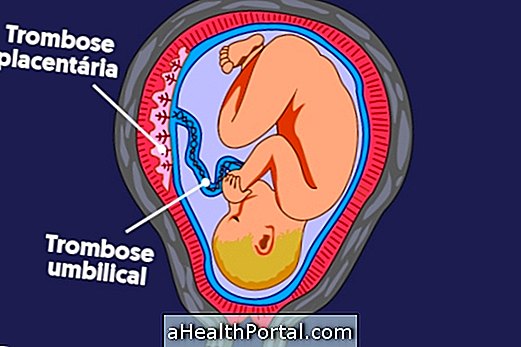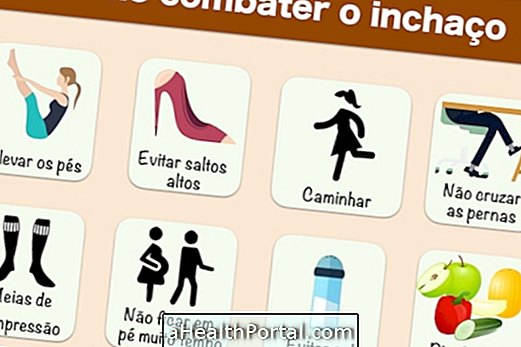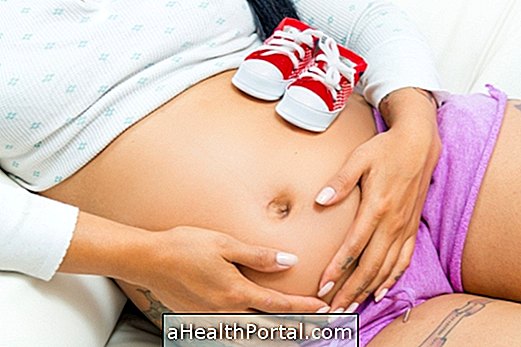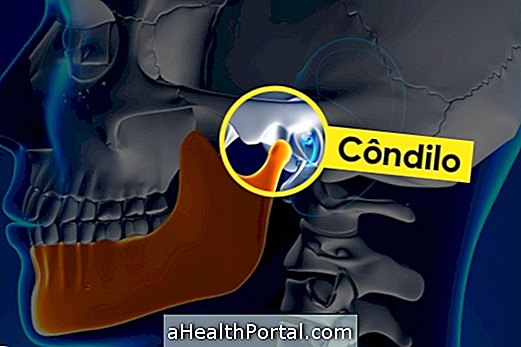The postpartum bleeding, whose technical name is lquio, lasts in average 5 weeks and is characterized by the exit of dark red blood with thick consistency and that sometimes presents blood clots.
As the uterus contracts and returns to normal size, the amount of blood lost is diminished and its color becomes clearer and clearer until it disappears completely. This bleeding is made up of blood, mucus, and tissue remnants of the uterus.
In this phase it is important that the woman is at rest, avoid making any effort and observe the amount of blood that is lost, besides the color and presence of clots. It is recommended that a woman wear night-time absorbents and avoid using internal OB-type absorbents, as they can carry bacteria into the uterus and thus cause infections.

Warning signs to go to the doctor
You should worry about postpartum bleeding and call the doctor or go to the hospital in the following cases:
- Have to change absorbent every hour;
- If the blood that was already getting lighter, turn red again alive;
- If there is an increase in blood loss after the 2nd week;
- If there are large blood clots, larger than a ping-pong ball;
- If the blood smells bad;
- If you have fever or a lot of abdominal pain.
If any of these signs appear, it is important to contact the doctor as it may be a sign of infection, indicate the presence of remains of the placenta or indicate that the uterus is not returning to its normal size, can be solved by the use of medications or by performing a curettage.
How curettage is done
Curettage is a procedure performed by the surgeon during a hospital stay that is indicated when there are signs of infection. The procedure is relatively simple, done under anesthesia and recovery is not complicated, however the woman should be hospitalized 1 to 2 days without seeing the baby. See how recovery is after curettage.
Prior to curettage the doctor may indicate the use of antibiotics 3 to 5 days prior to the procedure to decrease the risk of complications. Therefore, if the woman is already breastfeeding it is important to consult the doctor to know if you can continue breastfeeding while taking medications to prepare for the surgical procedure, since some medications are contraindicated in that period.
If it is not possible to breastfeed, the woman can take the milk with her hands or with a bomb to take milk, which must be stored in the freezer then. Whenever it is time for the baby to nurse, the woman or someone else can defrost the milk and give the baby a cup or bottle that has a breast-like beak to avoid harming the breast. Here's how to get breast milk.
How does menstruation after birth
Menstruation after childbirth usually returns to normal when breastfeeding ceases to be exclusive. Thus, if the baby sucks exclusively in the breast or if he only takes small amounts of artificial milk to complement the breastfeeding, the woman should not be menstruating.
In these cases, the menstruation should return when the woman starts to produce less milk, because the baby starts to nurse less and starts taking suquinhos and papinhas.
However, when the woman does not breastfeed, her menstruation may come earlier, as early as the baby's second month and in case of doubt one should talk to the gynecologist or the baby's pediatrician in routine consultations.
























